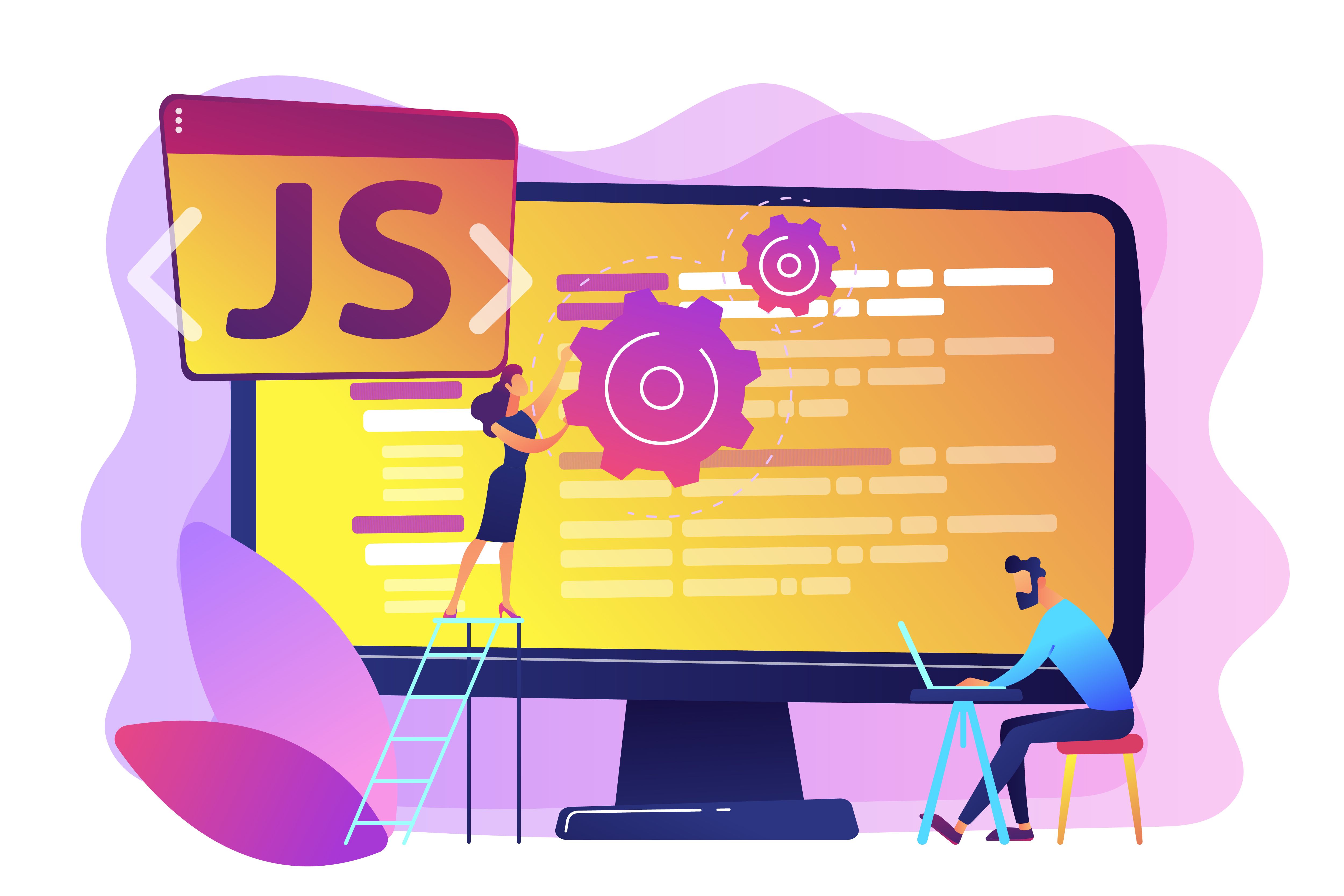6 Most In-Demand Programming Languages

Blog post by Favour Chukwukere,
Published at July 6, 2023
If you’re going to put aside the time and energy needed to learn new programming languages, you want to make sure, without a doubt, that the ones you choose are the most in-demand programming languages on the market.
After all, if you’re trying to start (or advance) a career in software development, you’ll need to be at the front of the metaphorical class. You’ll need to know which programming languages are popular, which are useful, and which are up-and-coming on the market — and then set yourself up to learn them.
Not sure where to start? Don’t worry, I’ve already done the heavy lifting for you to identify trends and draw conclusions that will help you plan for your programming education. In this article, I will walk you through the 6 most in-demand programming languages.
1. JavaScript

(Image by vectorjuice on Freepik)
What this language is used for:
- Game development
- Web development
- Building web servers
- Mobile apps
JavaScript currently stands as the most commonly-used language in the world. JavaScript is used to manage the behavior of web pages. With it, coders can create dynamic web elements such as animated graphics, interactive maps, clickable buttons, and more. Programmers who use HTML, CSS, and JavaScript in tandem obtain a higher level of website control and can provide a better user experience in terms of navigation and readability.
JavaScript is the most common coding language in use today around the world. This is for a good reason: most web browsers utilize it and it’s one of the easiest languages to learn. JavaScript requires almost no prior coding knowledge — once you start learning, you can practice and play with it immediately.
Moreover, because the language is so ubiquitous, there are countless communities, courses, and avenues of professional support available online. This support, in addition to the language’s top-notch usability, makes JavaScript number one on our list of the most in-demand programming languages.
2. Python

(Image Source: Wallpapercave)
What this language is used for:
- Back-end development
- App development
- Data science
Python is a general-purpose programming language that empowers developers to use several different programming styles (i.e., functional, object-oriented, reflective, etc.) when creating programs. Several popular digital tools and platforms were developed with Python, including YouTube, Google Search, and iRobot machines.
As one of the more easy-to-learn and -use languages, Python is ideal for beginners and experienced coders alike. The language comes with an extensive library that supports common commands and tasks. Its interactive qualities allow programmers to test code as they go, reducing the amount of time wasted on creating and testing long sections of code.
That said, even advanced users would benefit from adding Python to their mental catalog of programming languages; with over 50% of hiring managers seeking candidates who know the language, Python is easily one of the most marketable and in-demand programming languages.
3. KOTLIN

(Image Source: Geekflare)
What this language is used for:
- Web developments
- Data science
- Android development
Kotlin is a cross-platform, statically typed, general-purpose high-level programming language with type inference. Kotlin is designed to interoperate fully with Java. Kotlin is easy to learn, especially if you already know Java (it is 100% compatible with Java).
Kotlin is one of the fastest-growing and widely used programming languages. Kotlin brings together the best object-oriented and functional programming features. Software developers across the globe prefer the Kotlin language for various projects. It is a very easy and friendly language as well. It is quite easy to maintain and debug this language, so it is a good language to start with.
Kotlin is widely used to develop mobile applications, multiplatform mobile development, server-side applications, and more. It’s like Java with a few extra features; the Kotlin project can even use Java libraries. Despite the fact that Java is a really cool language, Kotlin’s creators placed a greater emphasis on code simplification and transparency.
4. C++
(Image Source: ReedCourses)
What this language is used for:
- Developing browsers
- Operating systems and applications
- Gaming
C++ is a high level, general purpose programming language. C++ was designed with systems programming and embedded, resource-constrained software and large systems in mind, with performance, efficiency, and flexibility of use as its design highlights. C++ has also been found to be helpful in a wide variety of other contexts. With its key strengths being software infrastructure and resource-constrained applications, such as desktop applications video games, servers (e.g. e-commerce, web searches, or databases), and performance-critical applications.
The C++ language has two main components: a direct mapping of hardware features provided primarily by the C subset, and zero-overhead abstractions based on those mappings. Stroustrup describes C++ as “a light-weight abstraction programming language [designed] for building and using efficient and elegant abstractions” and “offering both hardware access and abstraction is the basis of C++. Doing it efficiently is what distinguishes it from other languages.
5. Java

(Image Source: Codelido)
What this language is used for:
- E-commerce
- Finance
- App development
Java is a general-use and object-oriented programming language. In object-oriented programming, developers create objects that encompass functions and data, which can then be used to provide structure for programs and applications.
Java’s popularity is for good reason; this language is relatively easy to learn and use, boasts incredible security, and can handle massive amounts of data. These features make Java an ideal language for the online finance sector, and it is often applied in industries such as banking, billing, and the stock market.
The versatility of the language, however, is what learners find really appealing. Touted as a “write-once, run-anywhere” language, Java can effectively run on any operating system, regardless of which OS was used to write the original code. It is thus ideal for writing apps not only for mobile phones and computers but also for remote processors, sensors, and a variety of other consumer products.
6. SQL

What this language is used for:
- Database management
- Sales reports
- Business management
SQL, or Structured Query Language, is a language that allows programmers to query and manipulate databases. As a domain-specific language, it is designed mainly for managing data within an RDBMS (relational database management system). Put simply, SQL can locate and retrieve data from a database, as well as update, add or remove records.
While SQL is highly functional, it tends to work better with small databases and doesn’t always lend itself to managing expansive ones.
Final Thoughts
Picking the programming language is not a big deal. What is important is that you pick something and stick with it long enough to get through the learning curve required to gain proficiency. Plenty of programmers who are just starting out get frustrated because they feel like they are just not getting it.
Whether you are an established coder or just starting to look into the industry, learning a new language is one of the best ways to advance your programming career. But how can you start your educational journey?
Your first step depends on you, your schedule and the resources you have at hand.
A college program, for example, will provide you with a comprehensive education in the theory and practice of programming — however, the typical undergraduate program also demands four years of full-time study and tens of thousands of dollars in tuition funding.
If you want a faster and less expensive educational experience that focuses on skills-based learning, you may want to consider a coding boot camp. Coding boot camps equip you with the hands-on skills and language proficiencies you’ll need to land an entry-level job in the field — all within three to six months.
Keep in mind that while this route offers tremendous flexibility and opportunity for low-cost learning, it may not be a fit for students who need external motivation. If you know that you’ll have trouble keeping yourself accountable, try one of the other options mentioned above!
No matter which route you ultimately choose, one point is for certain: there’s no better time to pick up a new skill and kickstart your coding career.
